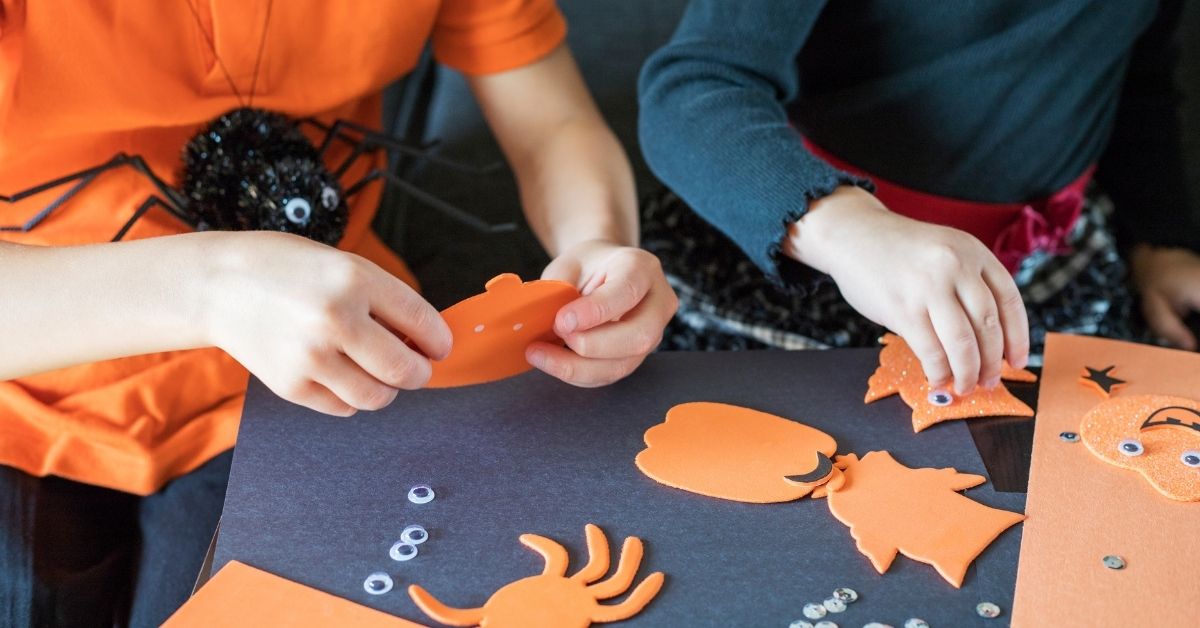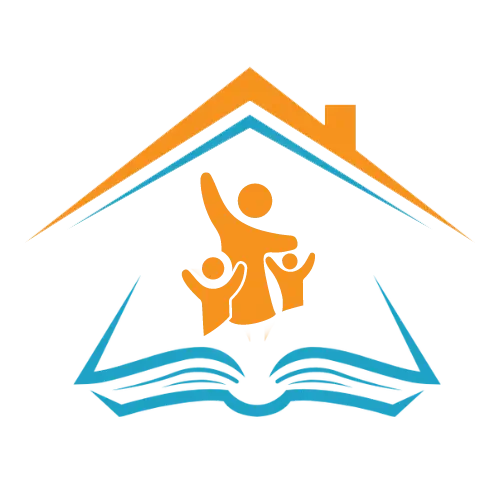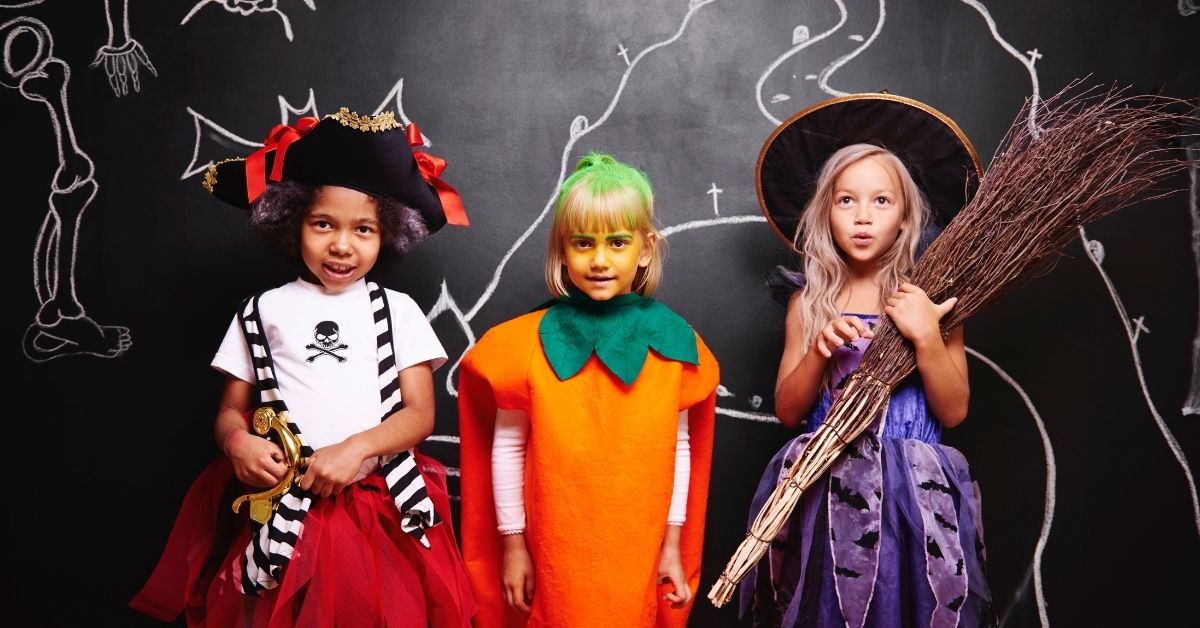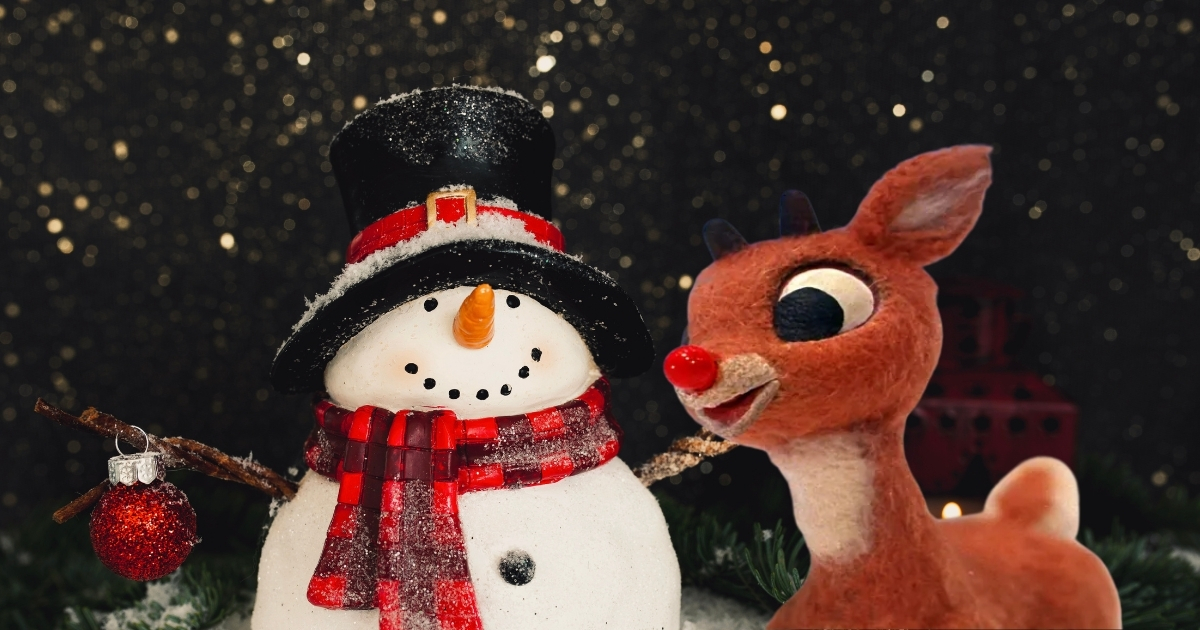The air turns crisp, leaves begin to fall, and a sense of excitement builds for one of the most anticipated holidays of the year: Halloween. For homeschooling families, this festive season offers a unique opportunity to blend education with fun, creating memorable learning experiences that go beyond traditional textbooks. Instead of seeing the holiday as a break from learning, you can use it to enrich your curriculum in creative ways.
By thoughtfully planning some Halloween homeschool activities, you can cover subjects from science and history to art and math, all while embracing the spooky spirit of October.
This guide is designed to give you practical and actionable ideas for weaving the magic of Halloween into your daily lessons. We will explore how to turn spooky stories into literature lessons, transform pumpkin carving into a science experiment, and use candy for math challenges. You’ll find suggestions for all age groups, ensuring that every child in your homeschool can participate in the festive learning.
Get ready to make this Halloween both educational and exceptionally fun for your entire family.
Fun Halloween Lessons For Your Homeschool
Holiday-themed lessons can capture a child’s attention in a way that standard curriculum sometimes cannot. The excitement surrounding Halloween provides a natural entry point for engaging, hands-on learning across multiple subjects. By connecting academic concepts to pumpkins, ghosts, and bats, you can foster a genuine love for learning and make complex topics more approachable and fun. These lessons don’t need to be elaborate; even simple tweaks to your existing plan can make a big difference in student engagement and retention.
Think about the natural curiosity children have this time of year. They are already talking about costumes, candy, and spooky decorations. As a homeschool parent, you can harness that enthusiasm and channel it into productive, educational pursuits. A trip to the pumpkin patch can become a lesson in life cycles and agriculture. A discussion about Halloween traditions can evolve into a deep dive into history and cultural studies.
The possibilities are endless when you start to see the holiday as a vast educational resource waiting to be explored. The key is to be creative and flexible, allowing your child’s interests to help guide the lesson.
Spooktacular Science And Math
Science and math are often the easiest subjects to adapt for a Halloween theme. The holiday is filled with natural elements and quantifiable items that lend themselves perfectly to experiments and calculations.
Science Experiments
- Pumpkin Guts Exploration: Turn pumpkin carving into a biology lesson. Have your kids explore the inside of a pumpkin, identifying the skin, pulp, seeds, and stem. You can weigh the pumpkin before and after carving, count the seeds, and discuss the pumpkin life cycle.
- Volcanic Pumpkin: A classic science fair project with a spooky twist. Carve a jack-o’-lantern and place a small cup inside. Add baking soda to the cup, and then pour in vinegar mixed with a few drops of orange food coloring. The resulting “eruption” of foamy lava is a great demonstration of a chemical reaction between an acid and a base.
- Bat and Spider Biology: Use the popular Halloween creatures to teach about animal biology. Research the life cycle of a bat, its role in the ecosystem (like pollination and insect control), and the science of echolocation. For spiders, you can study different types of webs, learn about venom, and discuss their importance as predators.
- Spooky Slime Creation: Making slime is a fantastic chemistry lesson. You can find many recipes online using simple household ingredients like glue, contact lens solution, and baking soda. Discuss the concept of polymers and non-Newtonian fluids as you mix your gooey creation. Add plastic spiders or googly eyes for a festive touch.
Math Challenges
- Candy Math: Use Halloween candy for a variety of math lessons. Younger children can practice sorting by color, shape, and size. They can also create patterns and use the candy as counters for simple addition and subtraction. Older children can calculate fractions, percentages, and create graphs showing the distribution of different candy types in their haul.
- Pumpkin Measurement: Before carving, use a pumpkin for a lesson in measurement. Have your children measure the pumpkin’s circumference, height, and weight. They can estimate these values first and then compare them to the actual measurements. This is a great way to practice using tools like a measuring tape and a scale.
- Spider Web Geometry: Challenge your kids to create a spider web using yarn and sticks or by drawing one on paper. This can be an introduction to angles, lines, and geometric shapes. Discuss radial symmetry and the structural strength of their designs.
- Counting and Estimating: Fill a jar with candy corn or pumpkin seeds and have everyone in the family estimate the number inside. After everyone has guessed, count the items together. This simple activity reinforces estimation skills and counting in large numbers.

Ghoulishly Good Halloween Homeschool Activities In History And Language Arts
Halloween’s rich history and tradition of storytelling make it a perfect subject for history and language arts lessons. From ancient Celtic festivals to classic horror literature, there is a wealth of educational material to explore.
History and Social Studies
- The Origins of Halloween: Dive into the history of the holiday. Research the ancient Celtic festival of Samhain, where many Halloween traditions originated. Discuss how the holiday evolved over time, incorporating influences from Roman festivals and Christian traditions like All Saints’ Day.
- Halloween Around the World: Explore how other cultures celebrate this time of year. Learn about Día de los Muertos (Day of the Dead) in Mexico, a vibrant festival honoring deceased loved ones. Research other autumn festivals from around the globe to broaden your child’s cultural understanding.
- Costume History: A lesson on the history of costumes can be fascinating. Discuss why people started wearing costumes for Halloween. You can explore different historical eras by having your children choose a figure from a period you are studying and designing a costume based on that person.
Language Arts
- Spooky Story Writing: Encourage your children to write their own spooky stories. Provide them with story starters or prompts like, “The old house at the end of the street was empty, or so we thought…” This is a great way to practice creative writing, character development, and plot structure.
- Monster Poetry: Introduce different forms of poetry, such as acrostics, haikus, or limericks, with a Halloween theme. Have them write a poem about their favorite monster, a haunted house, or the feeling of trick-or-treating at night.
- Classic Horror Literature: For older students, October is the perfect time to introduce classic horror and gothic literature. Read excerpts from authors like Edgar Allan Poe (“The Raven,” “The Tell-Tale Heart”), Mary Shelley (“Frankenstein”), or Bram Stoker (“Dracula”). Discuss themes, literary devices, and the impact these stories have had on modern culture.
- Halloween Vocabulary: Create a list of Halloween-themed vocabulary words. Define words like “eerie,” “macabre,” “supernatural,” and “phantom.” You can turn this into a game of charades or Pictionary to make learning the new words more interactive.
Homeschool Halloween Crafts For Creative Kids
Art and craft projects are a fantastic way to celebrate the season while developing fine motor skills, encouraging creativity, and providing a hands-on outlet for learning. Homeschool Halloween crafts can range from simple paper projects for little ones to more complex creations for older kids. The best part about these activities is that they often result in festive decorations you can use to adorn your home, making your learning space feel more spirited and fun. From painting pumpkins to crafting spooky creatures, these projects allow children to express themselves artistically while engaging with the themes of the holiday.
Setting aside time for crafts gives children a break from more structured academic work, allowing their minds to relax and engage in a different way. This creative time is not just for fun; it’s crucial for developing problem-solving skills and spatial awareness. When a child decides how to construct a paper bat or what colors to use on a painted pumpkin, they are making artistic choices and figuring out how to bring their vision to life.
These projects can also be done together as a family, providing a wonderful opportunity for bonding and creating lasting memories. So, gather your supplies and let your children’s imaginations run wild with these festive craft ideas.
- No-Carve Pumpkin Decorating: For a less messy and safer alternative to carving, let your kids paint their pumpkins. They can use acrylic paints to create funny faces, spooky scenes, or abstract designs. You can also use markers, glue, glitter, and other craft supplies to embellish the pumpkins.
- Paper Plate Monsters: This is a simple and fun craft for younger children. Give them paper plates, construction paper, googly eyes, pipe cleaners, and markers. Let them design their own unique monsters. This activity is great for practicing cutting and gluing skills.
- Coffee Filter Ghosts: Create a string of floating ghosts to hang around the house. All you need are coffee filters, a black marker, and some string. Drape a coffee filter over a small ball of tissue or another filter, draw a face on it, and tie a string around the “neck” to create a simple, spooky ghost.
- Q-Tip Skeletons: This craft is a fun way to learn about the human skeleton. Have your children arrange Q-tips on a piece of black construction paper to form a skeleton. They can use a full Q-tip for long bones like the femur and cut them in half for smaller bones like ribs and fingers.
- Spooky Window Silhouettes: Use black construction paper to cut out Halloween shapes like bats, cats, witches, and haunted houses. Tape them to your windows to create a spooky silhouette effect when viewed from the outside, especially at dusk. This project helps with scissor skills and spatial design.
As you integrate these fun and educational activities into your homeschool, remember that the goal is to spark curiosity and make learning an enjoyable process. This Halloween, you have the chance to create an immersive learning environment that your children will remember for years to come.
For more helpful guides, creative lesson ideas, and homeschooling resources, be sure to explore the other articles on our blog. We are dedicated to supporting you on every step of your homeschooling journey.




